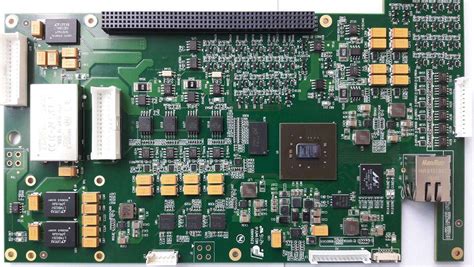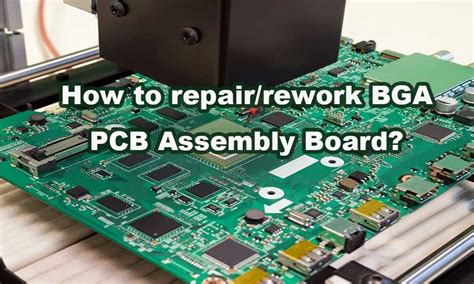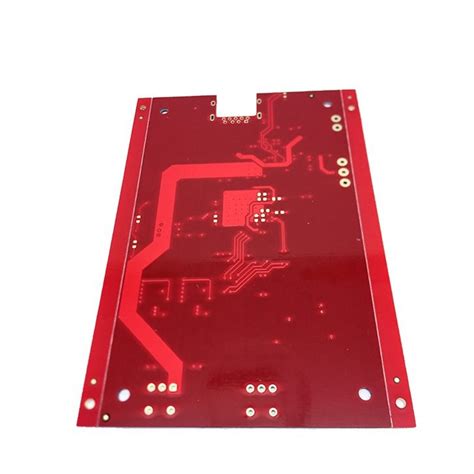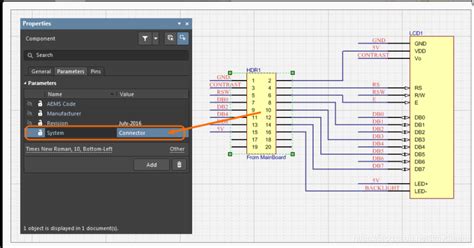Mastering BGA PCB Assembly for Reliable Electronic Designs
Key Takeaways
Mastering BGA PCB assembly is essential for achieving reliable electronic designs. Understanding BGA technology provides a foundation for professionals and enthusiasts as they navigate the complexities of the format. Implementing the right tools and materials during pcba ensures a smoother process, while proficiency in step-by-step soldering techniques can significantly reduce common issues encountered in assembly. Every pcb assembly project may present unique challenges; therefore, having an arsenal of solutions is crucial. Additionally, adherence to best practices for testing and quality assurance cannot be overstated—this aspect guarantees that designs not only function well but also stand the test of time under various operational conditions. As technology evolves, keeping abreast of innovations in BGA technology is vital for staying competitive in the electronic design landscape. Exploring case studies of successful BGA PCB projects can provide valuable insights and inspire new approaches in future work. Continuously seeking resources for ongoing learning in BGA assembly will empower individuals to refine their skills and adapt to changing industry standards, contributing to more efficient and effective projects.
Understanding BGA Technology: An Introduction
Ball Grid Array (BGA) technology has revolutionized the way printed circuit board assembly (PCB assembly) is approached. This advanced packaging method contributes to the reliable performance of electronic designs by providing a robust connection between the chip and the PCBA. At its core, BGA utilizes an array of solder balls on the underside of an integrated circuit, allowing for effective heat dissipation and electrical connection.
The primary advantage of using BGA is its small footprint, which is ideal for modern devices that demand high performance within limited space. This compact configuration facilitates denser layouts that enhance the functionality of multiple electronic components packed into a single board. Furthermore, BGA packages typically exhibit fewer issues related to solder joint failure compared to more conventional packages, making them a preferred choice for high-reliability applications.
Key Considerations in BGA Technology:
| Feature | Benefit |
|---|---|
| Compact Size | Enables higher component density |
| Superior Heat Dissipation | Extends device lifespan |
| Lower Electromagnetic Interference | Improves signal integrity |
“Adopting BGA technology not only enhances reliability but also allows designers greater flexibility in their electronic layouts.”
Understanding the intricate dynamics of BGA will empower both professionals and hobbyists alike to implement this technology with confidence in their future pcb assembly projects. As we navigate through this guide, we will demystify complexity and enhance your capability to produce exceptional, long-lasting electronic designs.

Essential Tools and Materials for BGA PCB Assembly
In the realm of BGA PCB assembly, having the right tools and materials is crucial for achieving high-quality results. Key components include a reliable soldering station equipped with a temperature-controlled iron, which enables precise application of heat during the pcb assembly process. Utilizing solder paste is essential, often applied through a stencil to ensure accurate placement on the pads. For positioning BGA packages, an appropriate pick-and-place system can enhance efficiency and accuracy, reducing the likelihood of misalignment that can lead to costly manufacturing errors. It is also advisable to employ high-quality printed circuit boards (PCBs) that feature robust traces and pads capable of handling reflow processes without damage. Additionally, employing a good microscope or magnifying tool is beneficial for inspecting solder joints after reflow, ensuring consistent quality in the final product. Lastly, it’s prudent to keep cleaning materials on hand, such as solvents or wipes specifically designed for electronics, to maintain optimal working conditions. The combination of these essential tools and materials ensures that every stage of pcba—from design through assembly—is executed with precision and reliability.
Step-by-Step Guide to BGA Soldering Techniques
When it comes to BGA PCB assembly, mastering the soldering techniques is crucial for ensuring a robust connection and enhancing the reliability of electronic components. BGA, or Ball Grid Array, utilizes small solder balls placed on the bottom of the component, which are then heated to create an electrical connection with the printed circuit board (PCB). The first step in this process involves preparing the PCB assembly by applying a suitable solder paste to the pads where the BGA will be placed. Proper placement of the component is essential; precision tools like a stencil can help achieve an even distribution of solder paste, thus promoting a stronger bond.
Next, you will apply heat using a reflow oven or hot air rework station. This stage requires careful temperature control — typically, you’ll want to achieve a peak temperature between 220°C and 260°C for optimal solder flow without damaging sensitive components. Once heated, the solder balls will melt into small pools that solidify upon cooling, creating reliable joints. Post-soldering inspection is vital; techniques such as Automated Optical Inspection (AOI) can help identify any misalignments or defects in your PCBA.
Remember that achieving excellent results in BGA PCB assembly is not solely about technique but also about understanding the materials involved. Variables like PCB surface finish and moisture sensitivity levels of components can influence your outcomes significantly. Following established standards and best practices throughout this process not only ensures reliability but also prepares you for any challenges that may arise in your future projects with BGA technology.

Common Challenges in BGA PCB Assembly and Solutions
In the realm of BGA PCB assembly, several challenges frequently arise that can impact the overall reliability and performance of electronic designs. One major issue is achieving proper solder joint formation, as the BGA technology relies heavily on solder balls for optimal electrical connections. Insufficient heating during pcba can lead to cold joints, which compromise functionality. To counter this, using precise thermal profiles during reflow is crucial; professionals should invest in advanced reflow ovens that monitor temperatures accurately.
Another common challenge is alignment misalignment of the BGA components on the printed circuit board. If a component is not perfectly aligned during placement, it can cause reliability issues down the line. Implementing high-quality pick-and-place machinery coupled with sophisticated vision systems can significantly improve alignment accuracy, ensuring proper positioning of pcba components.
Additionally, there is the risk of void formation during soldering, which can weaken joints and affect thermal performance. To mitigate this issue, employing a suitable paste thickness and optimizing your stencil design are essential steps in enhancing solder joint integrity.
Lastly, rigorous testing post-assembly is vital to identify any defects early in the process. Incorporating automated optical inspection (AOI) systems can help detect common issues such as shorts and opens that may not be visible to the naked eye.
By addressing these challenges with informed strategies and advanced technology, professionals can ensure that their BGA PCB assembly achieves lasting performance and reliability in electronic applications.
Best Practices for Testing and Quality Assurance
When it comes to BGA PCB assembly, implementing robust testing and quality assurance practices is essential for achieving reliable electronic designs. One of the foremost strategies is to utilize in-circuit testing (ICT) during the PCBA process. This method allows for the detection of faults at an early stage, ensuring that any issues with soldering or component placement can be addressed promptly. It is also important to adopt a thermal imaging approach, as this can reveal hidden faults that are not visible to the naked eye, such as cold solder joints or branches that have not been adequately connected.
Furthermore, employing automated optical inspection (AOI) can significantly enhance quality assurance. This technology scans the PCB assembly for any discrepancies against predefined parameters, providing instant feedback and reducing human error. It’s vital to maintain a rigorous inspection protocol at different stages of the assembly process—pre-assembly checks should focus on board integrity while post-assembly checks assess component placement accuracy and solder quality.
Documentation plays a critical role in maintaining standards throughout the pcba workflow. Detailed records of each test and inspection cycle will not only facilitate troubleshooting but also assure compliance with industry standards. Lastly, continuous training for technicians on evolving technologies and techniques ensures that expertise remains sharp, contributing to the overall success of BGA PCB assembly projects. By focusing on these best practices, professionals can enhance reliability and achieve high-quality electronic designs that withstand real-world challenges.
Innovations in BGA Technology: Future Trends
The landscape of BGA (Ball Grid Array) technology is continuously evolving, promising to enhance the reliability and efficiency of pcb assembly processes. Innovations such as advanced materials, finer pitch designs, and improved soldering techniques are becoming increasingly prevalent. For example, the introduction of lead-free solder alloys is not only addressing environmental regulations but also contributing to the durability of pcba (Printed Circuit Board Assembly) products. Furthermore, with the advent of 3D printing in the creation of prototype circuitry, designers can now experiment with innovative configurations that were previously impractical. The integration of smart manufacturing technologies, including automated optical inspection and machine learning-driven quality assessments, is set to revolutionize how assemblies are tested and validated. As more companies embrace these advanced methods, it becomes crucial for professionals in the field to stay updated on these trends, ensuring that they can leverage cutting-edge practices for robust electronic designs. In summary, staying abreast of these innovations will not only enhance productivity but also ensure that the final products remain competitive in an ever-changing market landscape.

Case Studies: Successful BGA PCB Projects
In examining the landscape of BGA PCB assembly, several notable case studies highlight the effectiveness and reliability of this technology in various applications. One prominent example is the development of a high-performance medical device that required compact design and superior thermal management. By utilizing BGA technology, engineers were able to integrate multiple components onto a single substrate, optimizing space and enhancing functionality. This application not only illustrates the precision that can be achieved with pcba, but also underscores the importance of integrating best practices throughout the assembly process.
Another case study involved a consumer electronics manufacturer striving to reduce production costs while maintaining high quality. By implementing automated BGA PCB assembly techniques, the company significantly improved throughput and reduced defects. This allowed for quicker time-to-market and increased customer satisfaction, showcasing how efficient pcba techniques can directly influence a company’s success.
In these successful projects, proactive testing strategies were key to ensuring reliability. The incorporation of rigorous quality assurance checks at each stage of the pcba process mitigated potential issues before they became problematic, establishing trust in both the process and the end product. These examples demonstrate how mastering BGA PCB assembly can lead to groundbreaking innovations across various industries while achieving consistently dependable outcomes in electronic designs.
Resources for Continued Learning in BGA Assembly
To enhance your expertise in BGA PCB assembly, a variety of resources are available for both professionals and enthusiasts. Online courses offer comprehensive education on the fundamentals of pcba, providing insights into advanced soldering techniques and troubleshooting methods. Websites specializing in electronics often feature webinars and video tutorials that demonstrate hands-on techniques and real-world applications. Additionally, joining forums and communities focused on BGA technology can connect you with other professionals, fostering discussions that can lead to valuable insights and shared experiences.
Technical books dedicated to PCB assembly serve as excellent references, covering key concepts, industry standards, and the latest innovations in the field. Subscribing to relevant journals ensures you stay updated on emerging trends and breakthroughs that could impact your projects. Exploring these resources will not only enhance your understanding but also support your continual improvement, enabling you to create more reliable electronic designs with BGA technology. By actively engaging with these tools and communities, you can ensure that your skills remain relevant in this rapidly evolving landscape.

Conclusion
In wrapping up our exploration of BGA PCB assembly, it is essential to recognize the critical role that pcba plays in creating reliable electronic designs. Mastery of BGA technology demands not only proficiency with essential tools and techniques but also a keen awareness of common pitfalls and effective troubleshooting strategies. As we have discussed, the step-by-step guide to BGA soldering techniques provides a solid foundation for both novices and seasoned professionals alike. The importance of adhering to best practices in testing and quality assurance cannot be overstated, as these protocols significantly enhance the durability and functionality of electronic components. Looking ahead, staying informed about innovations in BGA technology will empower you to integrate cutting-edge advancements into your designs, ensuring they meet the evolving demands of the market. By consistently applying learned concepts and continually addressing challenges, you can contribute meaningfully to this dynamic field. Embrace these practices, and you’ll be well-equipped to create electronic designs that are not only effective but also resilient over time.
FAQs
What is BGA PCB assembly?
BGA PCB assembly, or Ball Grid Array PCB assembly, is a technique used to mount integrated circuits onto a printed circuit board (PCB). It utilizes a grid of balls, typically made of solder, that allows for a more efficient and reliable electrical connection.
What tools are required for BGA soldering?
Essential tools for BGA soldering include a precise soldering iron, heated soldering station, stencil printer for paste application, reflow oven or hot air rework station, and inspection equipment like microscopes to ensure quality.
What are common issues encountered during BGA PCB assembly?
Common challenges in BGA PCBA include poor solder joint reliability, issues with alignment during placement, and difficulties in inspecting hidden joints underneath the package. These challenges can often be mitigated through careful design and thorough testing.
How can one ensure the quality of BGA assembly?
Ensuring quality in BGA PCB assembly can be achieved through regular inspections at different stages of production, implementing thermal profiling during reflow processes, and employing rigorous testing methods post-assembly to identify any defects.
Are there any trends in BGA technology that are worth noting?
Current trends include miniaturization of components, advancements in materials used for soldering to enhance reliability, and innovations in automated assembly processes. These trends aim to streamline production while maintaining high standards of quality.





